Comments Off on My Quest For Carbon Freedom! (Not Really)
I don’t think of myself as some sort of eco-warrior. I’m just a guy that likes technology and gadgets. The fact that technology happens to be better for the environment is a happy side effect.
Case in point, I loved my BMW M6. 500+hp, V10, 9ish miles per gallon, 100+ smiles per gallon love. It’s an amazing piece of automotive technology.
However, I also love my money. And I hate wasting it. So when gas prices were sky high about a year ago and my maintenance repair bills on the car topped $7K over a six month period (naturally, it was just out of warrantee), I had to let her go.
And so began my quest for savings and economy while still pursuing my love of technology and performance. The first step on that journey was to engage Solar City to “solarify” my house. I looked at several solar companies but selected Solar City even though they weren’t the least expensive. They have massive market share and I trusted that they would be the least likely to screw up my roof or our electrical system given more “at bats” than pretty much anyone else.
I specced out a system of panels and inverters to generate an average of 1,000kwh per month (less in the winter, more in the summer), which would handle ALL of my household electrical needs in addition to driving 100 miles a day via an electric car.
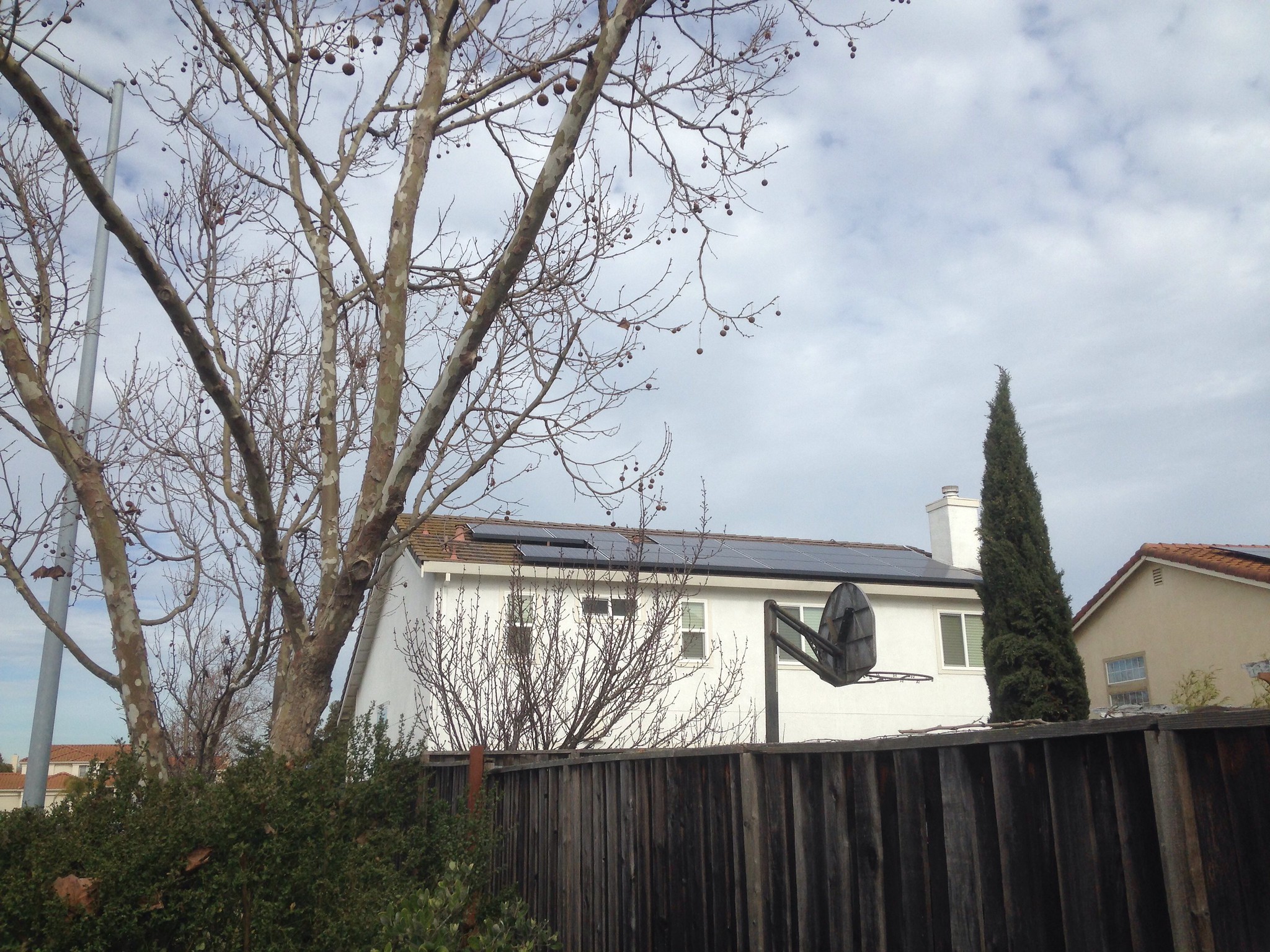 Some of the many solar panels. |
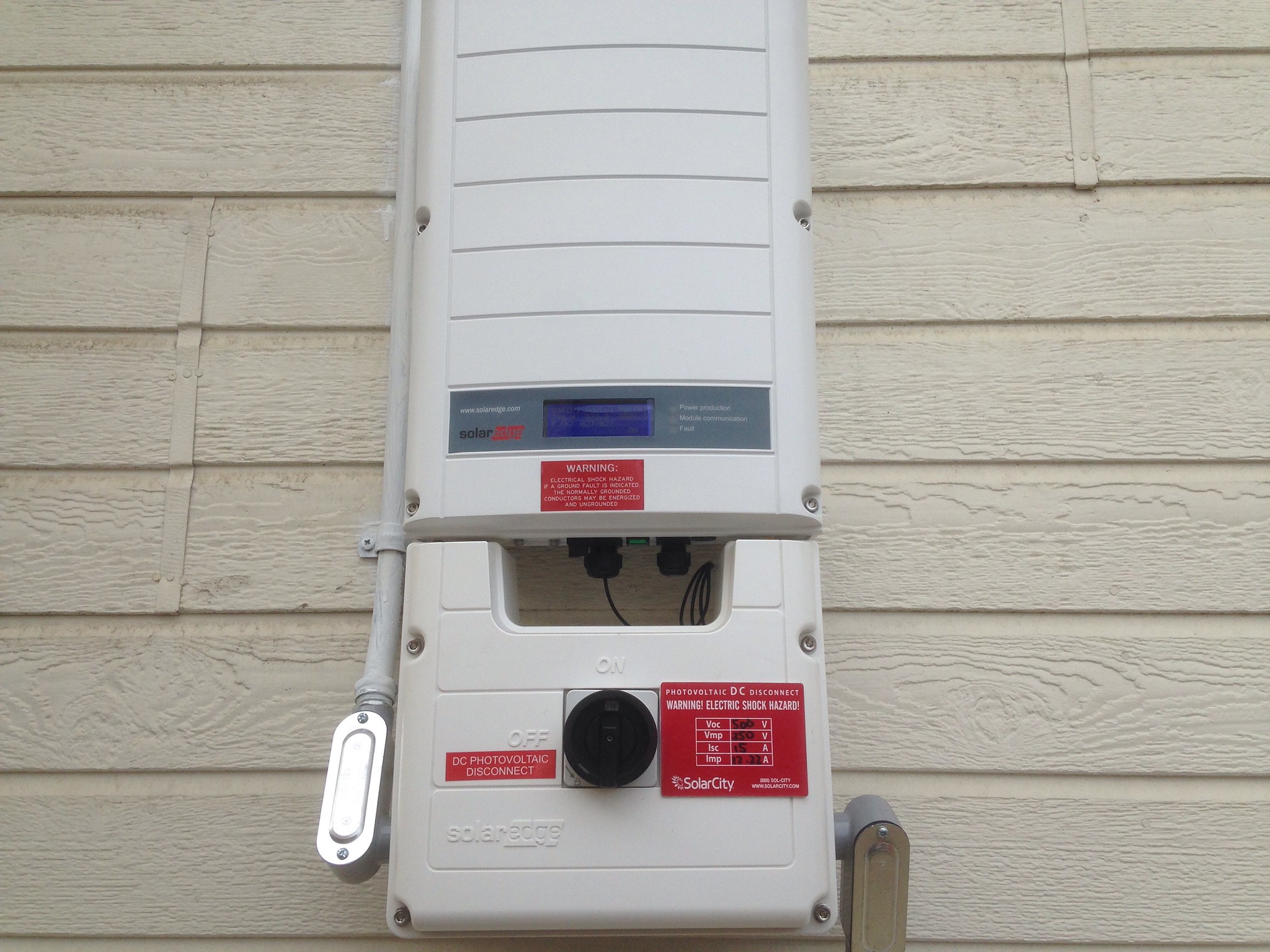 The inverter. |
Nevermind the fact that I don’t have an electric car. I figure, we’d tackle that later.
It took about three and a half months from the initial outreach to Solar City to me flipping the switch and generating power. Steps in between were plan generation (how many panels, where would they go on my roof, etc.), HOA approval of the plan, City approval of the plan including permitting, installation of panels, inspection of installation by the city and by PG&E. So, lots of steps. But we got here.
It’s winter time currently, and it’s been cloudy the last few weeks so my hours of generation and amount of generation is at the low end of the averages, but it’s nice to see what’s happening.
 Cloudy but still 400+ KW/hrs generated in about a half month |
In the end, my electric bill is half of what it was (I’m buying power, not the panels, though I have the option of buying them later) and my price is locked in for 20 years. So next year’s PG&E price hike and the ones that come after, I’m immuned to. And it’s all from clean energy. Win-win all around.
So what about that car?
Well, my wife started a new job at the beginning of January and the commute has been difficult. She knows that I’ve wanted a Tesla for a while and we’ve discussed it at length, but we’ve been holding off for a variety of reasons. That said, the pain of the commute coupled with our solar power triggered her interest in an electric car. For those outside California, electric vehicles that register for the program, get a sticker that lets them use the carpool lanes with a single person in the car.
She found a hell of a deal on a 2015 Fiat 500e. No, it’s not a “from the ground up designed for electric” Tesla, but it’s a cute little commuter car with a nearly 90 mile range. It’s fun as hell to drive and has some particularly clever features that Tesla would be wise to adopt. I’d liken it to a go cart.
 Front view. |
 From the rear |
That same day, she let me put in our deposit on a Tesla Model X. We’re not committed to the purchase yet, but my place in line (somewhere in the 15,000s) is held for when pricing, configurations and availability get shared later this year. I’m super excited as the Model X would be a perfect replacement for our 15 year old Lexus RX300 (which is still running great with about 220K miles on it… knock on wood).
.jpg) It looks nice in white, doesn’t it? |
So in my head, I’d like to say we bought two electric cars in one day (we didn’t really, but I like to think that because that’s cool to say).
But owning an electric car isn’t all fun and games… especially if you don’t have a level 2 charger handy. And figuring out how to handle our level 2 charging needs for a future Tesla in addition to the Fiat required some research and some planning. And an electrician. Here’s what we learned and the approach we took.
Leveling Up
So the Fiat comes with a little level 1 charger, that can plug into a standard 110V outlet. It’ll charge about 10 miles every 3 hours on average (more when it’s empty, less when it’s nearly full), so nearly 24 hours for a full charge.
A level 2 charger, at 220V-240V, 30AMP output, it can charge empty to full in about 4 hours.
However, to do that, requires a dedicated 220V-240V, 40 AMP circuit and the purchase of a charging station.
I’d thought we’d go to Tesla and we’d get one of their High Power Charge Stations, however, what we’d learned is that Tesla’s stations output at a much higher rate than standard stations and that they don’t have adapters to translate to non-Tesla cars (which every other car in the world currently uses an SAE J1772 connector). Tesla’s connector is proprietary given the higher power needed to charge much larger batteries than any other electric cars on the market today.
As I mentioned, Teslas can take up to an 100 AMP connection for twin charging (which could charge from empty to full in 9 hours, which is really fast considering the 260-300 mile range) and require a 50AMP minimum input and 100 AMP maximum (there are dip switches in the HPWC to configure it depending upon the input).
Most of the chargers on the market for all other cars on the market (BMWs, Fiats, Toyotas, Nissans, Fords, Chevy’s etc.) are meant to be hardwired to a 30 AMP or 40 AMP circuit at maximum. So we don’t have a “one size fits all solution”.
However, we had an electrician put in a single 100AMP circuit, off of which he put a breakered 40AMP step down to connect a level 2 charge station for the Fiat.
 Blink in the box |
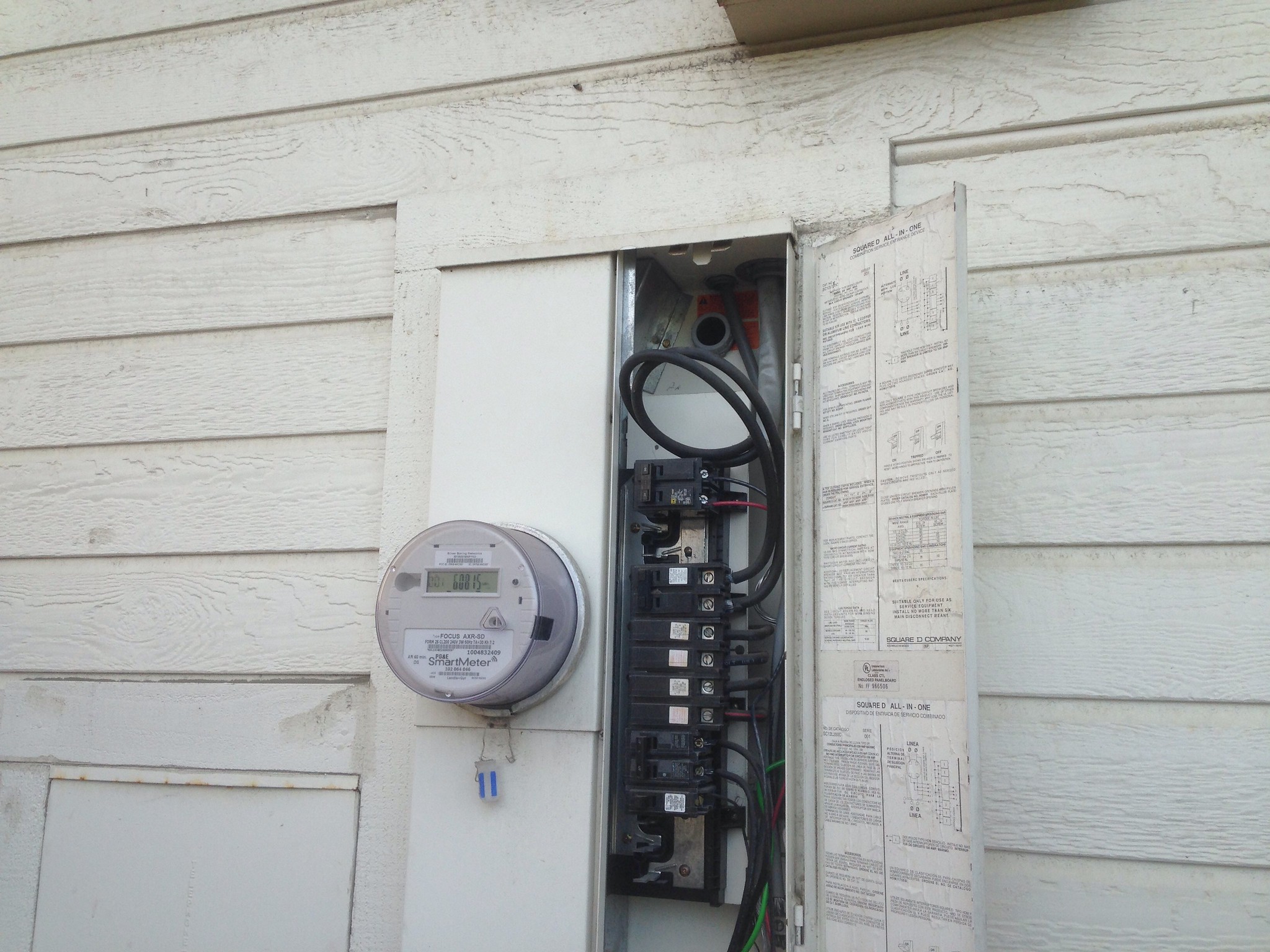 High Voltage! 220V, 100 Amp circuit going in the main |
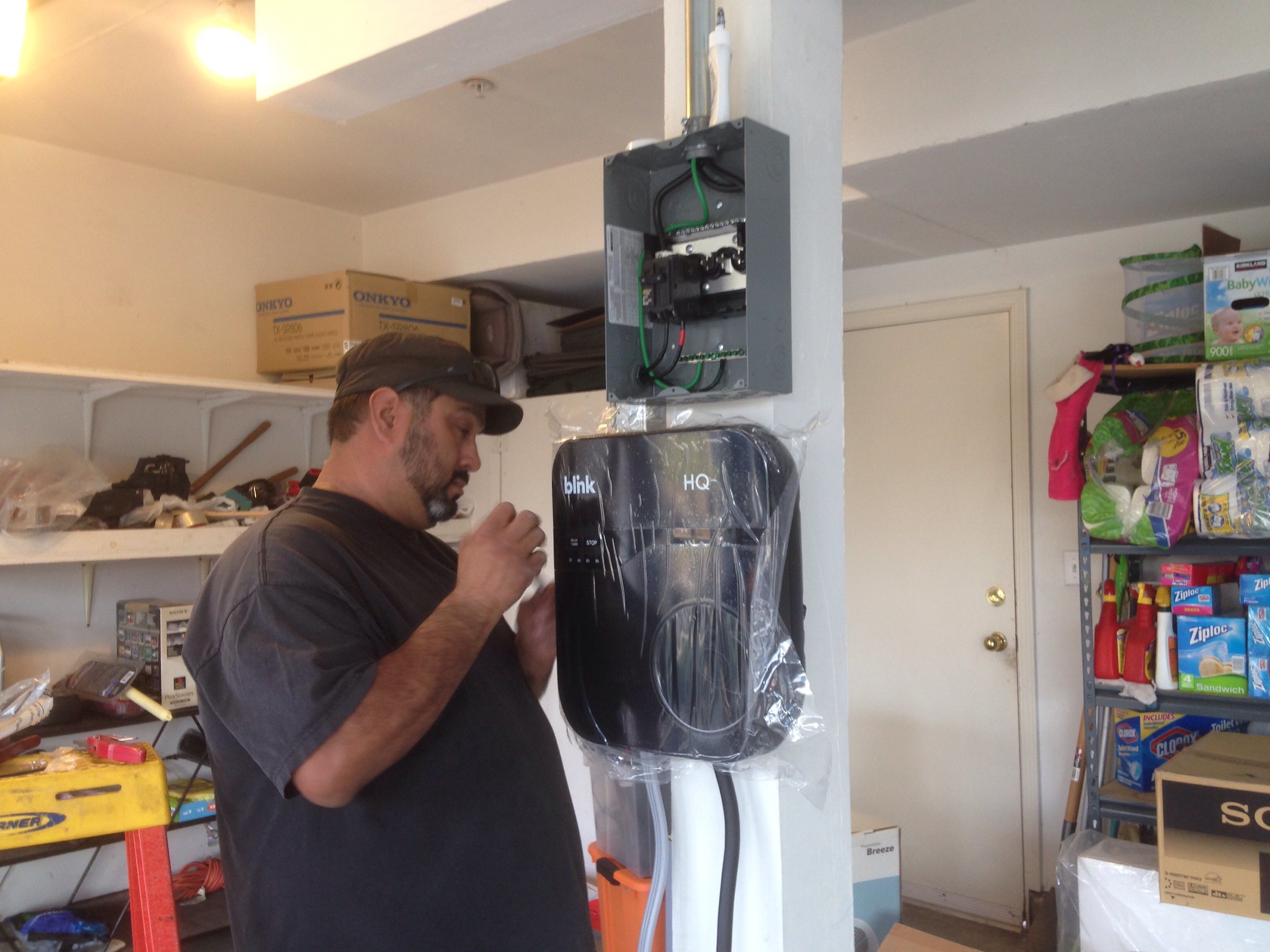 Steve installing the Blink below the 40 AMP breaker |
 There’s 100AMPs running into this box, 40AMPs gets split off for the Blink charging station |
We selected the Blink charging station which we ordered from Amazon. The trick we did here is, to have the charging station wired to a plug (a NEMA 14-50 I believe) instead of hardwiring in the event we happen to move some day.
When we’re ready and actually pull the trigger on the Model X, we’ll be able to wire in a Tesla HPWC in a twin charger setup (full 80-100 AMP draw) and still have the Fiat charging too (or whatever else we have in the future). Hell, someday, if we have two Teslas, we’ll be able to do one at twin charger speed and a second at standard 40 AMP speed simultaneously.
So in short, we should be future proof for our level 2 charging needs for Tesla and non-Tesla operations at this point.
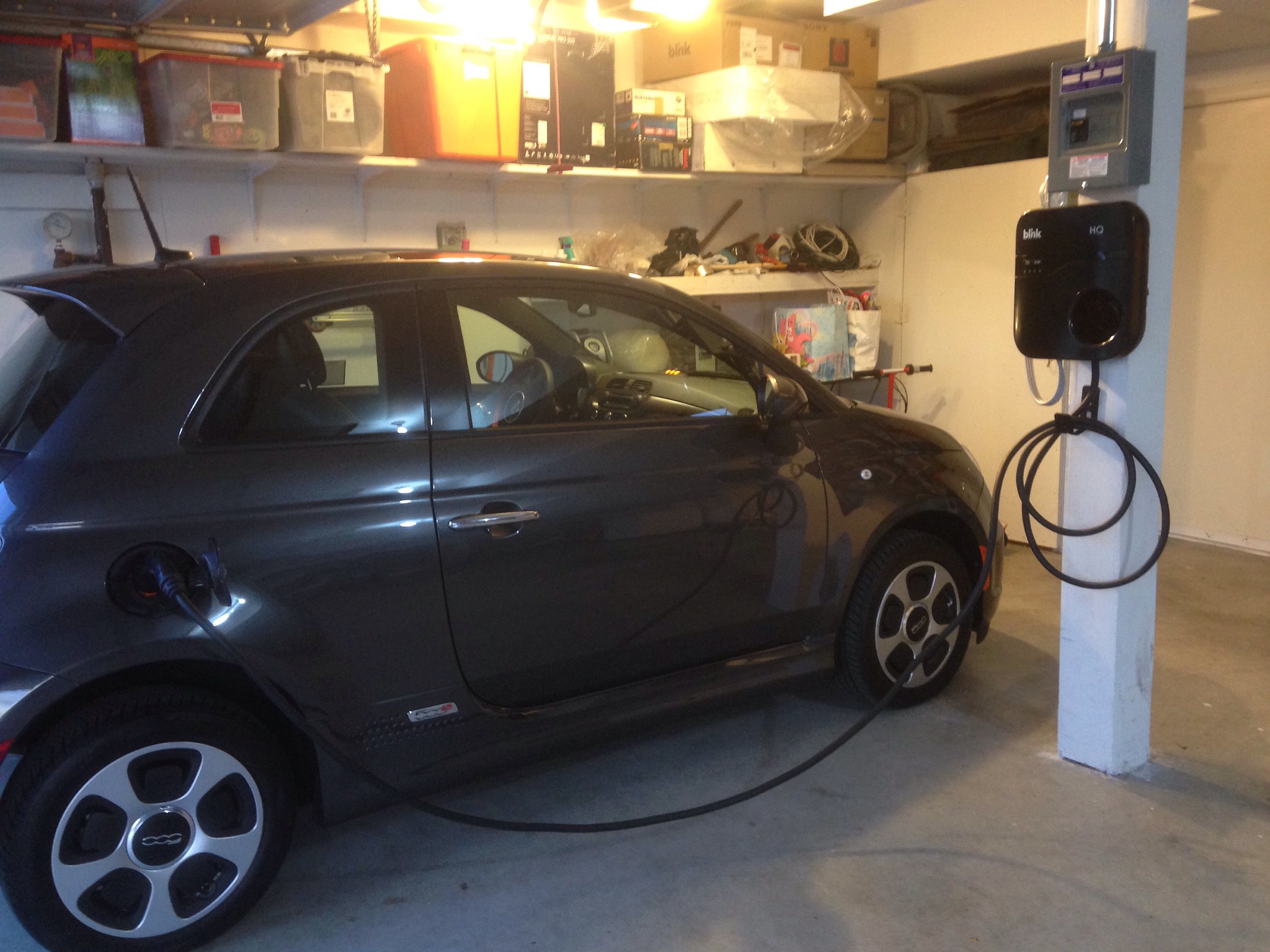 Phase one complete. Bring on the Tesla Model X |
If anyone is contemplating going the solar route, let me know and I’ll put you in as a reference for Solar City and they’ll contact you for a consultation (no charge) and walk you through the process. I’m not sure about all of them but my rep was great for hand-holding through the process. If you go with them, it saves me a little money (no pressure though).
UPDATE
I got a lot of comments on my Facebook post about this blog entry. One great one I think is worth sharing from Scott Le Grand who writes.
| I’ll bite… I’m turning 50 this year. IMO that means it’s time for a proper mid-life crisis. Enter my plans to buy a Corvette Z06 by the end of the year. $75-$80K for a car that gets 19/27 mpg and goes from 0-60 in 2.6 seconds (I drove a 1999 sleeper modded z28 Camaro and averaged 30< ---not a typo mpg across 12 years so this is not a radical next step for me). Anyway, I have thought a lot about buying a Tesla P85D. It's $120K. At $4/gallon, that's about $2500/year in gasoline. So about break even over 16 years so the Corvette ends up a better deal and probably more fun to drive. Meanwhile, my average electricity bill is $100/month despite a server farm of GPUs that can outgun and outclass most deep learning startups in my master bedroom (sidenote: I'm always open to a CTO position, not those crappy engineering plus chicken scratchings equity gigs, but I digress). So another part of me wants to go solar so I can run them 24/7 with a 4KW solar system. But it just doesn't make sense yet. So how to proceed? POR is buy the corvette and wait for solar to get cheaper. Am I missing something? |
To which I responded with some info that I think may also help folks understand how to figure out if you’re a good candidate for solar:
| First of all, solar doesn’t make sense for everyone. Our power needs are silly, which PG&E happily reminds me every month on the bill when it compares our usage to “other similarly sized houses”. We’re like 2X an efficient home of our size.
Some of that usage are the numbers of beefy PCs that run here (four giant towers, two beefy laptops, etc.), and some operate 24×7 as media or file servers. A big part are the three refrigerators, including the very important 172 bottle wine fridge. A low month for me is about $200 in electricity. A high month (hello Christmas) is about $350 – $400. To figure out if it makes sense for your case, you have to understand the tiers of pricing for how you consume electricity. Tiers 1 and 2 have relatively low per kwh pricing (though there was another price hike this month across all tiers so the pricing I’m about to show it is what it was… it’s higher now and in the years to come, it will continue to be higher). Tier 1 usage is good for about the first 340 kwh and costs around $0.15 per kwh. Tier 2 is the next 100 kwh, and those cost about $0.18 per kwh. Then things get nasty… Tier 3 is good for the next 240 kwh and those cost $0.27 per kwh. Everything above that is tier 4 and those cost $0.33 per kwh. So as you continue to scale up your usage, your bill will increase non-linearly. If you aren’t hitting tier 3 and 4 consistently, solar probably doesn’t make sense for you, electric car or not. I’m locked into $0.14 per kwh for the next 20 years as I’m buying the electricity, not the panels (I went for the $0 down package). If for some reason I exceed the capability of my system (by, for example, getting that second EV that we didn’t design for), it shouldn’t be by much and I’ll hopefully not break the tier 1 limits (thus keeping my price per kwh low). If I bought the setup outright (about $31K as specced minus 30% for tax incentives) my bill would be effectively the $5 a month we’ll continue to pay PG&E for the right to push electricity back to the grid and to have them keep track of metering. As it is, my bill will be about $140 a month for the next 20 years. It doesn’t matter if PG&E raises rates every year (as they have been over the past twenty years an average of 6% per year…). So these days, I”m saving about $60 – $200ish a month, depending upon the month. 15-20 years from now, I”ll be saving what would be $300 – $500 a month (inflation not withstanding). I have the option of buying the panels any time at a depreciated rate (it doesn’t make financial sense to do so until at least six years otherwise it would have been roughly the same as buying at the beginning given that I won’t get the advantage of the tax incentive up front). In either case, Solar City is responsible for all maintenance and upkeep on them. So if a $6K inverter blows, don’t care, it’s on them. And they’re actively monitoring the system too. At the end of 20 years, I’ll effectively own them as they’ll depreciated to zero and I’d sign a small maintenance contract with them (like insurance) in the event something does go wrong. At which point my bill is zero. If I move homes, I have options. I can buy it out at the depreciated rate and keep it with the house as it’s sold. I can negotiate with new buyers to do the buy out and transfer the contract or for $1K they’ll remove the system from this home and install it on a new one and I get to keep my pre-existing contracted rate. On the gas issue, I spent about $3K per year on gas for the BMW M6. We tend to keep our cars for a long time. The M6 was a bit of an exception as I only had it for five years. The corvette is a hell of a machine and you wouldn’t go wrong with it. And your gas assumptions of an average of $4 a gallon is probably a safe one over the next few years (btw, there’s some incoming federal tax raises that are coming on gas soon… to be up from $0.18/gallon to not sure what… maybe $0.21?). I don’t think you make the case for solar/ev solely off of the economics today. I think you have to look at other costs being indexed for inflation (gas and PG&E electricity) when your costs are fixed with solar. As time moves on, the comparison gets easier. Your particular “mileage” may vary of course. |